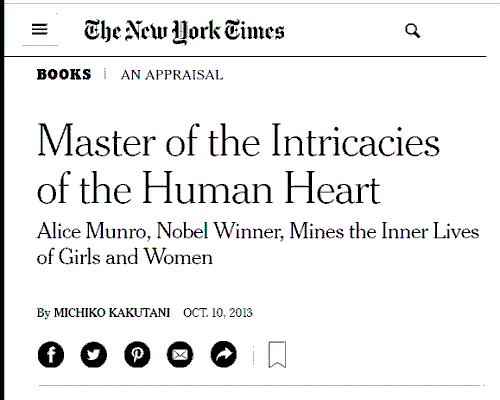Tuesday, July 2, 2024
Mabou Minecraft
Saturday, March 26, 2022
Tuesday, July 7, 2020
Wednesday, December 27, 2017
On Fiction and Mathematics
"There is always an awareness in her fiction
of the subjectivity of perception, and
the kaleidoscopic permutations
that memory can work on reality."
This is from a New York Times article subtitled
"Alice Munro, Nobel Winner, Mines the Inner Lives
of Girls and Women" …
The New York Times article was linked to by Marjorie Senechal
in a Huffington Post article of All Saints' Day 2013.
Further material on kaleidoscopic permutations —
See the Log24 post Symmetry of May 3, 2016.
For further material on mining, see Diamond-Mine:

"SEE HEAR READ" — Walt Disney Productions
Tuesday, October 10, 2017
The 35-Year Wait
From the Web this morning —

A different 35-year wait:
A monograph of August 1976 —

Thirty-five years later, in a post of August 2011, "Coordinated Steps" —

"SEE HEAR READ" — Walt Disney Productions
Some other diamond-mine productions —
Wednesday, August 10, 2011
Objectivity
From math16.com—
Quotations on Realism
|
The story of the diamond mine continues
(see Coordinated Steps and Organizing the Mine Workers)—
From The Search for Invariants (June 20, 2011):
The conclusion of Maja Lovrenov's
"The Role of Invariance in Cassirer’s Interpretation of the Theory of Relativity"—
"… physical theories prove to be theories of invariants
with regard to certain groups of transformations and
it is exactly the invariance that secures the objectivity
of a physical theory."
— SYNTHESIS PHILOSOPHICA 42 (2/2006), pp. 233–241

Related material from Sunday's New York Times travel section—
Sunday, August 7, 2011
Coordinated Steps
From this morning's Sunday New York Times—
"Stories were the primary way our ancestors transmitted knowledge and values. Today we seek movies, novels and 'news stories' that put the events of the day in a form that our brains evolved to find compelling and memorable. Children crave bedtime stories…."
— Drew Westen, professor at Emory University
From this evening's news—
"TOKYO (Dow Jones)–The Group of Seven leading industrial nations said they are committed to taking coordinated steps…."
Who's their choreographer?
My choice would be Uncle Walt—

See also yesterday's "Norway Summer" and the link in
this afternoon's "Reflection Group" to "A Better Story."






